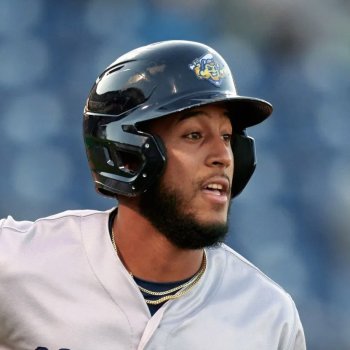
Twins Video
On March 22, Major League Baseball and the MLB Players Association (MLBPA) announced a tentative agreement on several rules for the 2022 season, two of which are a result of the expedited 3-1/2 week spring training that is currently underway due to the MLB lockout cutting into the spring training schedule.
Under these agreed-upon rules, MLB teams will be allowed to expand their rosters from the typical 26 players to 28 players through May 1 to compensate for the shortened spring training period. This will theoretically allow players, especially pitchers, to have some more rest built-in at the start of the season due to their lessened ramp-up time. In addition, MLB and the MLBPA agreed to implement the aptly nicknamed “Shohei Ohtani Rule” which states that a pitcher can remain the DH after he’s done pitching for the day. Double-headers this year will return to a traditional nine-inning format as opposed to the seven-inning games that took place during 2020 and 2021.
And everyone’s favorite rule- the ghost runner- has been resurrected from its grave.
Without a doubt, the most notable, and controversial, rule MLB and MLBPA agreed on is the return of the runner-on-second in extra-innings rule, also referred to as a “ghost runner,” "designated runner," and "automatic runner." No matter its name, the rule, which has been used in the minors since 2018, was introduced to MLB in 2020 during the 60-game shortened season and states that “all half-innings after the ninth will begin with a runner on second base.” Given that the 2020 schedule was so tight with very few off-days built-in, the goal of the rule was to expedite the ending of games that reach extras to avoid teams having to deplete their bullpen and shuffle players around in the wake of a monster game. The rule also endeavored to increase game action for fans and prevent games from stretching late into the night.
Despite differing opinions on if the rule should exist at all, it has without a doubt been a success in shortening the length of extra-inning games. In 2019 before the rule was implemented in the majors, the longest game went 19 innings with 24 pitchers used. In 2020 and 2021, only one game went longer than 13 innings- a 5 1/2 hour gauntlet between the Dodgers and Padres on August 25, 2021 that took 16 innings to decide. But this game was by far an anomaly. In 2019, 44 percent of extra-inning games ended in the 10th inning. This percent skyrocketed after the implementation of the runner-on-second rule- as of midway through the 2021 season, 72 percent of extra-inning games in 2020 and 2021 were decided in the 10th inning.
Last season, the ghost runner rule was scarier than a haunted house for many Twins fans. Though the Twins ended up finishing the 2021 season 11-12 in games reaching extras, they started out 0-8 in these games before finally winning in the 10th inning vs Cleveland on May 23. For the most part, their struggles were due to simply not executing at the plate in the form of popouts, grandouts and strikeouts.. Another reason why the Twins may have struggled with this rule is the team’s lack of bunting and sacrifice plays. In 2021, the Twins were tied for last in the MLB in sacrifice hits per game. Bunts and sacrifice flies enable runners to advance along the base paths in exchange for the batter “sacrificing” himself as an out. The runner-on-second rule introduces an entirely new strategy into the game, and teams who are able to execute sacrifice plays to advance the second base runner to scoring position at third are at an advantage.
When the Twins started out the season 5-3 last year, undefeated in nine-inning games at the time but winless in their three extra-inning games, Twins manager Rocco Baldelli relayed confidence in the team's ability to win games by swinging away in extras.
"There will be particular situations where we could make something happen, more in the light of a sacrifice bunt or going down that road," Baldelli said on April 10, 2021. "But most of the time, I think our best chance to win is sending good hitters up there and letting them take a crack at the at-bat. I would bet we do see it at some point this year."
The bats did eventually wake up, with the Twins winning 5 extra-inning games in a row starting with that May 23 win and finishing the season just under .500 in extra-inning games. But at the time, the frustration was palpable.
The ghost runner rule led to one particularly memorable moment for Twins fans last season when pitcher and automatic runner Kenta Maeda scored the winning run in a 10th inning victory over the Detroit Tigers on July 26.
It is important to note that the ghost runner rule only applies to the 2022 regular season, and the rule will not be in effect in this year's postseason. MLB and MLBPA have not made any statements about the rule's usage in 2023 and beyond. However, given this season will be the third in a row the rule has been implemented and that the MLBPA agreed to bring it back, thus signifying its members’ approval, one has to wonder if the rule might stick around.
Last season, Commissioner Rob Manfred said that he did not see the extra-runner rule continuing on post-pandemic, only to later walk back his comments. In fact, the MLB’s own (outdated) glossary still states, “This rule will not be in place for the 2020 postseason or the 2021 campaign,” signifying that the rule has stuck around longer than MLB was anticipating. Though the rule may be back in 2022 due in part to the shortened spring training period, the rule has appeared to grow on many managers and players.
“I actually think it’s kind of fun,” Cleveland Manager Terry Francona told The Athletic.
The Twins lost in extras vs the Seattle Mariners on April 10, 2021, which gave pitcher Taylor Rodgers a loss on his record despite only allowing one hit in his outing. But even in the wake of this frustration, he expressed understanding of the rule from an injury and roster standpoint.
"Trying to look bigger picture, that's something [where] we didn't play 17 innings, and we don't need to make two [roster] moves in the bullpen for that type of stuff," Rogers said. "So, bigger picture, I think that's probably the best move. But right now, it kind of stings."
Anyone else familiar with the phrase commonly heard among college baseball players “anything but extras?” Many other players are likely all in favor of a rule that will get them off the field and into an ice bath sooner.
Meanwhile, many fans have not had as warm of a reception to the rule's return. Opponents of the rule have deemed it antithetical to baseball and “bush league,” in addition to many other colorful descriptors. Some have suggested that the rule should not take effect right away in the 10th inning but perhaps later, like in the 12th inning. Some even took issue of the name of the rule itself, expressing disdain that many were referring to it as a “ghost runner.”
Fans of the Metrodome will remember fondly the light-up video board message proclaiming that Walks will Haunt (and they certainly always do). Will the runner-on-second rule return to be a specter in the eyes of Twins fans in 2022?
MY TAKE
With such a shortened ramp-up time for pitchers during spring training, I know that one marathon-length game could have big bullpen ramifications and necessitate a lot of roster shuffling. Thus, at the most, the automatic runner rule should be used in the 2022 regular season in the name of injury prevention but then never again in a regular-length season with a normal spring training. But if MLB was so concerned about wear and tear on its players, couldn't they just shorten the season (not that we want that, but it does make sense if we're strictly talking from an injury standpoint if the assertion is that players didn't get enough spring training work) or allow rosters to be expanded by more than two spots?
I am a believer that baseball games should have the chance to resolve themselves naturally, even if it takes a handful of extras to do so. If you think about it, MLB wanting to desperately cut down game times, both with pace of play measures like pitch clocks and the ghost runner rule, seems a bit counterintuitive- they want to provide less of their product to fans. What is their incentive to prevent long extra-inning games- to get people to keep watching? Those who have stuck around for the whole game will probably stick around once extras hit anyway. To me, the length of extra innings doesn't matter, whether it's one inning or four, I'm going to stick around and see what happens regardless of how long it takes.
MLB's quest to shorten games seems a bit misplaced to me in general. It goes back to a point I expressed in my piece about pitch clocks- baseball is inherently a slower-paced sport. Some people will be bored with the game regardless of how long they last. MLB can introduce all the pace of play measures it wants, but it will still not be hockey with its constant high-speed movement and players crashing into the boards or basketball with its nonstop scoring.
Those who think baseball is boring or do not care about what happens in extra innings probably won't find the automatic runner rule that exciting either. It's not a hockey shootout. And those who love baseball will enjoy extra innings without needing the manufactured drama of the automatic runner. There is also a certain legendary lore about long extra-inning battles that we would rarely witness with about 3/4 of games ending in the 10th inning under the rule.
Implementing the ghost runner rule to cut down on burdens on pitching staffs makes sense. Implementing it solely because fans get sleepy or disinterested watching extra innings does not. At the very most, if the rule must be used, it should not take effect right away in the 10th inning. The 12th inning seems like a good compromise to me, and based on stats showing the number of games currently ending in the 10th inning with an automatic runner, the game would probably end here in the 12th too. 12 innings is long but not egregiously so. Fans of this approach would say this gives the game about an extra hour to resolve itself, but if not, the buck stops here before things get miserable. But I'd prefer the ghost to just return to its grave.
What’s your take on the return of the runner-on-second rule? Leave a COMMENT below.
MORE FROM TWINS DAILY
— Latest Twins coverage from our writers
— Recent Twins discussion in our forums
— Follow Twins Daily via Twitter, Facebook or email
— Become a Twins Daily Caretaker
- The Mad King and Joey P
-
 2
2







Recommended Comments
Join the conversation
You can post now and register later. If you have an account, sign in now to post with your account.
Note: Your post will require moderator approval before it will be visible.